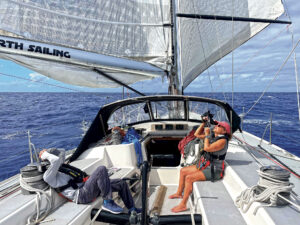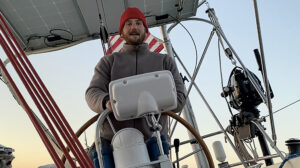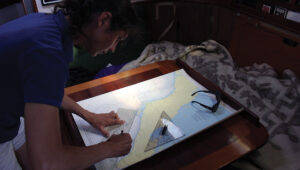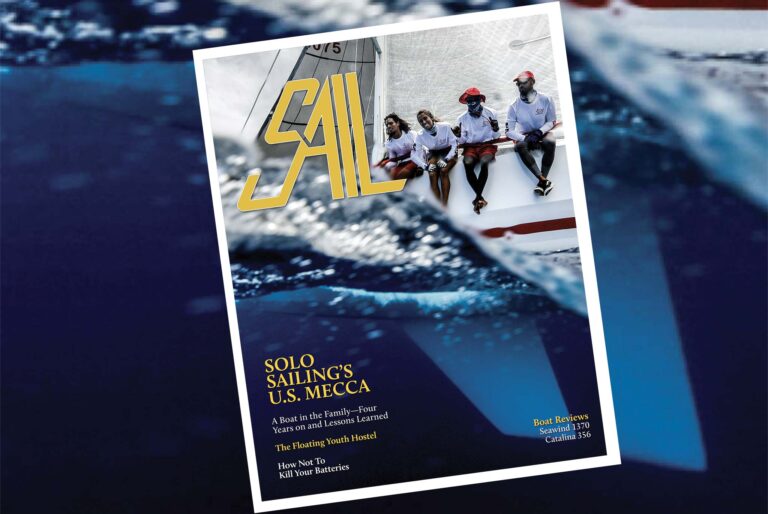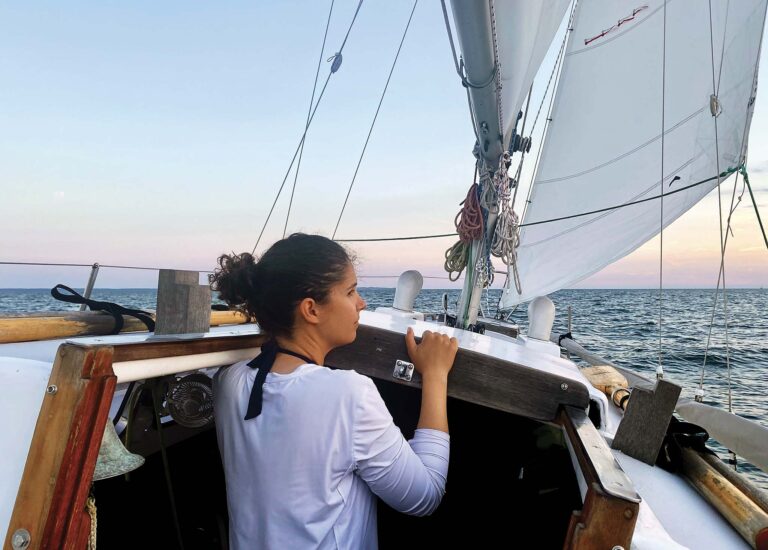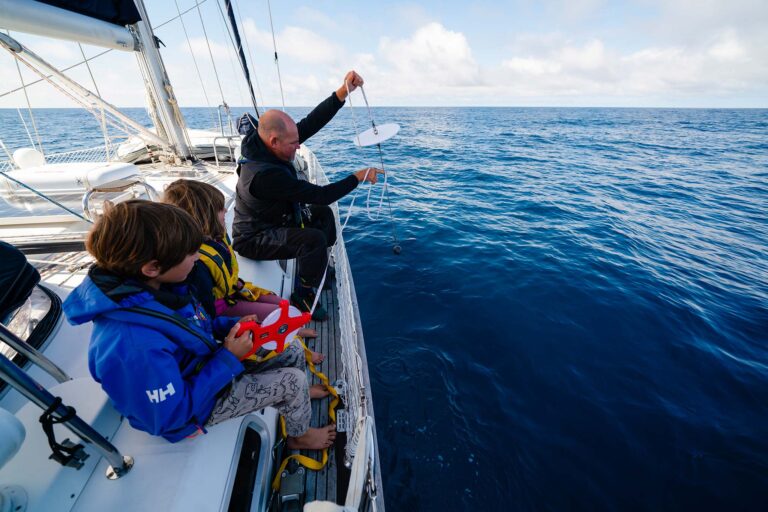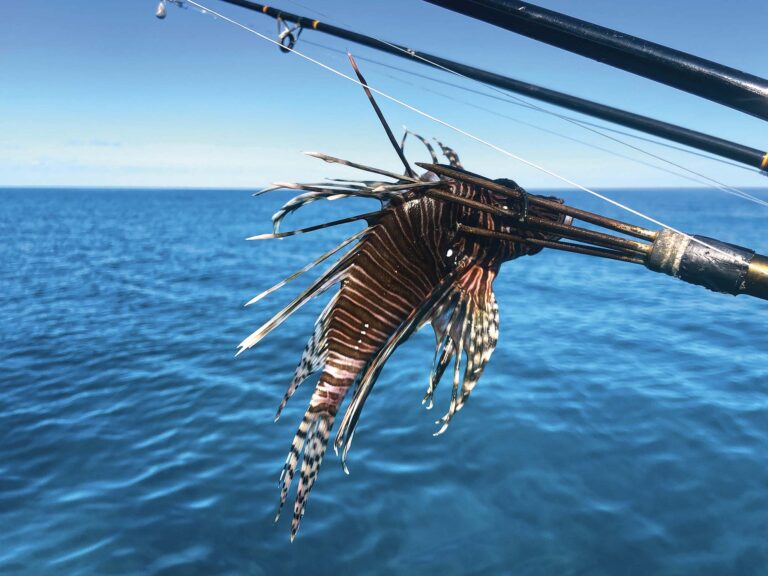This second installment of SAIL’s series on the evolution of modern sailboat design focuses on the 1970’s—the IOR decade and beyond. It was also the decade of racer/cruisers, cruiser/racers, dedicated cruisers, the rise of trailersailers, and the first of the fun, fast day racers—the J/24 and the Santa Cruz 27.
The adoption in the late 1960s of the International Offshore Rule (IOR) spelled the end of the Cruising Club of America (CCA) rating rule and with it the true dual-purpose offshore boat. Yes, there were plenty of (coastal) cruisers/(club) racers, but most were not suitable for crossing oceans. Like the splitting of the ape family millions of years ago, sailboat design diverged into several different branches of the same tree: IOR racers, cruiser/racers as above, and a new genus of hard-core offshore-cruising boats.
The IOR Decade
To obtain a CCA rating, an owner had to have his boat actually weighed—an expensive and inconvenient procedure. The IOR did away with weigh-ins by taking a number of measurements of the hull to estimate displacement. These measurements were dumped into a formula, and the resulting number was the boat’s handicap. Initially this sounded good, but over time flaws in the IOR grew more aggravating. Today it is remembered with little regret. (In Part 3 we’ll examine its successors, including the IMS.)
Designers, attempting to obtain the most favorable rating possible, naturally exploited the IOR any way they could. Because the rule recognized that wide beam reduces speed (unless planing), designers exaggerated beam, mostly above the waterline, where it didn’t add as much wetted surface area, which increases drag. That’s why you see tumblehome—topsides that bulge outward from the gunwale and waterline—in many IOR designs.
Bottoms tended to be flatter, especially forward, because a key measurement point was just aft of the end of the forward waterline and just off the centerline. By making the bottom flat here, the designer attempted to trick the rule into thinking the boat was heavier than it really was. Unfortunately, this also resulted in sharp, deep entries that didn’t steer well.
Waterlines and deck shapes tended to be finer, or “pinched,” in the bow and stern, looking somewhat more like diamonds than the fuller-ended designs of the CCA. This is why many IOR boats trim bow down, and it explains the unbalanced waterlines that make them difficult to steer downwind under spinnaker.
As an alternative to handicap racing, the IOR was used for six divisions of so- called level racing, in which all boats within a division competed evenly; they started at the same time, and the first across the finish line won. These were Mini-, Quarter-, Half-, One-, Two-, and Three-Quarter-Ton.
The longer it was around, the more the IOR was vilified, and not without good reason: many IOR boats have exaggerated proportions, poor performance, and are just plain ugly. The clinching factor may well have been in the rig, where the rule encouraged large headsails and small mainsails. This meant big winches and a lot more effort tacking, making these boats less attractive as family cruisers. The IOR basically killed the dual-purpose boat fostered by the CCA.
But the IOR wasn’t the only rating rule in the 1970s. The Midget Ocean Racing Club (MORC) catered to small boats, first with a 24-foot limit and later for any boats under 30 feet.
The game-breaker was the introduction of the J/24 in 1976. Not designing to any particular rule, Rodney Johnstone aimed to create a fast one-design keelboat, and he succeeded beyond his wildest dreams. With brother Robert handling marketing and sales, their new company, JBoats, eventually sold more than 5,000 units. The J/30 and other models soon followed, each capitalizing on the notion that what most people want is a boat that’s just plain fun to sail—fast, responsive, and relatively simple.
The same could be said for Bill Lee’s Santa Cruz 27. The Wizard, who coined the phrase “Fast is fun,” began a reign over the Transpac that continued for several decades. Indeed, his ULDB Merlin set a record time to Hawaii in 1977 that held until 1992, when she won the event again, in 46 minutes less time! With narrow beam, a deep fin, and a flat bottom, she often hit more than 20 knots surfing.
Racer/Cruisers – or Were They Cruiser/Racers?
Not all boats were designed to rating rules, of course, but the effect was felt even in family boats. Everyone seemed ready for a more modern look, characterized in part by flatter sheerlines; straight, raked bows instead of spoon-shaped bows; and no more stepped coachroofs. Under water, the fin keel/spade rudder configuration dominated.
A very influential designer/builder of the 1970s was C&C Yachts of Port Credit, Ontario. George Cuthbertson did most of the early design work, and the building end was supervised by George Hinterhoeller, one of four partners in the new company (the others were Bruckmann Mfg. and Belleville Marine). Cuthbertson was a staunch believer in what he called the “combination” racer/family cruiser, and three models introduced in 1970—the C&C 27, 35, and 40—exemplified his approach, albeit with emphasis on performance. The original 27, with a swept scimitar keel and rudder, was sufficiently popular to enjoy four revisions, ending with the Mark IV, and nearly 1,000 units were sold. The appendages of later versions were more vertical as a result of research on induced drag.
C&C was a pioneer in balsa sandwich construction, which stiffens large, unsupported hull panels, especially forward in the topsides, and reduces weight. The two easiest ways to gain speed are to add horsepower and lose weight. C&C was good at doing both; Red Jacket won the 1968 SORC, and in 1972, the prototype for the Redline 41, Condor, took the same event.
Bill Shaw’s designs for Pearson Yachts also played to the mainstream. The Pearson 26, for example, launched in 1970, has an underbody very similar to that of the C&C 27 and sold 1,777 units, plus 262 in a weekender version. The same-styled Pearson 30 (1971) won the 1972 North American Three-Quarter-Ton championship. Despite this IOR success, for much of its career the 30 was more popular as a Wednesday-night club racer. The distinction might be this: C&Cs are racer/cruisers; Pearsons are cruiser/racers.
C&C, Pearson, Cal, Catalina, Columbia, and the other big names of the ’70s provided complete interiors with berths for four to six, enclosed heads, standing headroom in the mid- to larger-size models, and workable galleys. Displacement-length ratios averaged in the low 200s, and sail-area displacement ratios were in the 17s, favoring the performance side of a conservative family boat.
Fiberglass Pans Become the Norm
The fiberglass interior pan brought major changes to the way boats are built. Despite the advantages of all-wood interiors—better thermal and acoustic insulation, easier modifications, and inspective tabbing to the hull—they are labor intensive. Once a fiberglass mold has been made and amortized, the cost of assembling an interior is greatly reduced. The main shortcoming of interior pans, besides condensation and noise, is difficulty in assuring a strong bond to the hull; most are set in a polyester slurry at anticipated contact points. Collisions may knock the pan loose. Many builders also began molding overhead liners, which prevented tabbing bulkheads directly to the deck; instead, the bulkheads are simply fitted into slots in the overhead. While certainly not true of all boats with major molded interior components, the average cruiser/racer built this way is not considered suitable for serious offshore sailing.
For mass-produced boats, however, the net effect of these changes in the 1970s was to lower costs and improve speed by reducing displacement and extending waterlines. Shallower hull forms also have less rocker, so water runs off the hull at a flatter angle, thereby creating less drag.
Hard-Core Cruisers
During the ’70s a variety of economic and cultural factors contributed to the emergence of all-out cruising designs. Most prominent was the cultish Westsail 32, followed by the Westsail 28, 42, and 43. An adaption of a William Atkin design derived from Colin Archer’s North Sea rescue-boat hull forms, the Westsail 32 is a double-ender with a hefty displacement-length ratio of 419. Builder/marketers Snyder and Lynne Vick sold the boat as a getaway from the humdrum corporate world, even pulling in Robin Knox-Johnston—who’d won the prize for being the first person to complete a solo circumnavigation, in a similar type of boat, as it happened—to endorse the design. To fuel the dream of whiling away the hours on a South Seas atoll, owner completion was encouraged; Ferenc Mt bought one and wrote the bestseller From a Bare Hull. Ridiculed by some as the “Westsnail,” the boat was safe but slow—not everyone’s cup of tea.
Full-keel fans found variants in the line of Cape Dorys and in boats designed by Robert Perry and built in Taiwan, such as the Baba 30 and Tayana 37. But it was Perry’s Valiant 40, his first major, independent design, that was a breakthrough in the ’70s of the same magnitude as the Cal 40 in the ’60s. A double-ender with a cruising fin, skeg-mounted rudder, and moderate D/L ratio of 250, it heralded the new age of “performance cruising.”
The beginning of the end of cheap oil may well have been the OPEC oil embargo of 1973. That, combined with a heightened public sensitivity to environmental issues, fueled in part by the love-everyone hippie generation, contributed in large measure to the emergence of the trailersailer. Roger MacGregor’s line of Venture swing-keelers quickly led to dozens more, including the Catalina 22, O’Day 22 and 23, Balboa 20 and 26, Aquarius 21 and 23, and Ericson 25. These boats could be stored in the driveway and towed to exotic locations that are impractical, or impossible, to reach by water. Accommodations are tight, however, and performance is generally sluggish. The fad didn’t last, and by the end of the decade there were few new trailersailer designs coming on the market. A relic of the age is the Rhodes 22, still in production.
Garry Hoyt, a former advertising executive, has made a career of challenging conventional wisdom, and nowhere was he more noticed than in his reinvention of the unstayed rig. Sharpie ketches of the 19th century had spars without stays, but it took Hoyt’s mediation of an airplane wing to spark a new generation of simple-to-trim rigs. First was the Freedom 40, with a centerboard hullform designed by Halsey Herreshoff. With a big main and mizzen, but no engine or prop to add weight and drag, the prototype was fast. Though Hoyt made a strong case for oars as a means of auxiliary propulsion, production versions were equipped with diesel engines and had keels. The concept took off and led to a number of other Freedom ketches, later evolving into sloops with vestigial jibs tensioned by Camber Spars—a light, flexible batten extending at right angles from the luff to the clew. The popular Nonsuch line, designed by Canadian Mark Ellis, soon followed.
The Caribbean bareboat-charter industry jump-started an entire genre of large, center-cockpit cruising boats, and entrepreneurs like the former dentist Jack Van Ost supplied them, with tanks like the CSY 44. The Moorings was influential in ordering large numbers of boats it thought its customers would like. Morgan Yachts recognized the potential early on, responding with the Out Island 41, of which more than 1,000 were built. Probably because of its Florida origins, its draft was kept shoal at just 4 feet, 2 inches, so stability was achieved by a very wide beam of 13 feet, 10 inches—making it a good candidate for inverse stability should it ever capsize. But some Out Islands cruised far and wide in safety, none more prominently than writer Earl Hinz’s. Excepting the OI 41, many of these designs, like the venerable Peterson 44, have cruising fin keels and skeg-mounted rudders.
Go to “The Boats We Sail Part 3“


